
How To Start A Blog: The Definitive Guide for 2025
Do you think that blogging is boring? Hard to do?
Well, it can be. Read on.
When I was little, around 7 or so (and for the next 8 years), I hated writing (oh-the-irony).
So, my mother bought me a Writing book.
And that book gave me a unique opportunity to hate Writing and the illustrations in the book.
But what still remains a family anecdote is that one Writing exercise I had to do one day:
One of the exercises showed the sketch of a girl with her crying dog.
What I had to do, was to fill in the thought bubble for the girl.
And that speech bubble was 10 lines long, which dictated (implicitly so) that I write something to fill all these lines.
I struggled for a while, then had an Epiphany and handed the book back to my mother.
She opened it and the girl’s 10-line-long thought bubble read: “Oh, no, it’s crying! Oh, why?”
Those 10 lines of that arguably humongous speech bubble only flaunted some generously spaced words. Which -in my defense- was right to the core.
What’s the point that I’m trying to make?
For starters, you never know what life will make of you (e.g. writer. I’m always hoping for top model or Gigi’s BFF).
Secondly, the length of an article is never dictated by the circumstances but by what the writer wishes to achieve. (You could say I wrote a haiku of sorts, for example.)
Thirdly, while a writer can write whatever and however they want, blogging is not so much an art, as it is a strategy. (So, forget your Beckettian potential and learn some rules.)
And, most importantly, you will never succeed in writing/blogging if your content lacks this one thing: purpose.
Now, let’s get started.
Why start a blog
If you are really good at something, even if you are the most introverted person to ever exist on this football that’s called planet Earth (cc The Arctic Monkeys), you have already considered starting a blog which is a great business opportunity.
Better yet, your friends or people you’ve known for fewer than an hour have suggested that you are so talented you should share your gift with the world.
But then, your perfectionism kicks in and, you don’t know how, what, or when. So you just stick to not doing anything about it at all.
I don’t blame you. But I’m about to.
If you or anyone you know is talented, show them a way to share their gift
One way is to join the Bachelor, Vanderpump Rules, becoming best friends with Ariana Grande because she complimented you on your ponytail (Gee, thanks, I just bought it), or to start a blog (you thought I was going to say start a YouTube channel, right? It’s coming).
I’ve always thought about starting a blog.
In fact, once, I almost did. I was going through a Facebook-rehab phase in my life.
But that didn’t fly. Actually, neither did.
I started writing but I didn’t know if anyone would ever read that, or who would.
I just wrote for the sake of writing, it gave me a sense of purpose, of sorts.
That’s why I quickly lost interest.
Writing for the sake of writing is not going to get you anywhere.
And it’s a waste of time.
So why waste your time when you can also make money out of doing something you already love?
- Make money blogging – but only if you are good, consistent, creative, authentic. Or none of the above, but a first-comer in your industry.
- Increase your authority as a professional in your industry. It can get you new customers who discover you on Google results or a forum in which you are a contributor or a magazine where you are a columnist
- Climb up the SEO ladder faster. It increases the authority of your website. It practically informs google that you are an expert in what you say. This is also correlated with the time users spend on your website, their bounce rate, etc.
- Avoid answering the same questions over and over again- if you own a product or service, starting a blog will help you explore your industry and customer journey in more depth as they will be looking for answers or asking new ones.
What you are doing wrong
Let’s start by considering what you are doing right now.
We’ll then compare and contrast it to what you should be doing instead.
What you do
When writing, you don’t have a purpose.
You write without a plan or timeline.
Standard frequency and consistency in publishing content is not your forte.
More often than not, you’d rather write 500-word texts.
Nothing of what you post is original in its approach or content.
Reading books is not your favorite sport. Not even in the Top 100.
What you should be doing
You know what you are talking about: your blogging has a start, middle, end.
Writing comes almost effortlessly thank to your reading experience.
You are a consistent writer and always welcome feedback from readers.
Exploring, clarifying, or discussing complicated concepts is intriguing to you.
You think these sentences look like personality test or horoscopes. True. Skip.
You love reading books. And finally…
You do you.
How to start a blog – Example
Step 1 – Segmenting the Market
Market and customer segmentation refers to the set of actions taken to break down a market into various segments which share the same characteristics.
For example, let’s say that my topic is “Teaching English”.
There is teaching English to EFL students (English as a Foreign Language), teaching English to ESL students (English as a Second Language), teaching English to kids, teaching English to adults, teaching English to professionals and their respective industries, teaching conversational English, teaching narrative techniques in English, and I could go on and on.
Step 2 – Targeting your audience
Now, I am going to choose who I will be targeting from the aforementioned segments: let’s say I want to create a program for adults wishing to brush up on their knowledge of English.
Step 3 – Positioning your brand
There are probably about 3000 programs out there. But mine will be free. So that leaves me with another 1000 free programs to compete with.
But mine will be oriented towards those who are native speakers of Greek. So, there are probably another 5 programs tops doing just that for free.
But I’m not done yet.
Step 4 – Establishing your USP
I need to find what makes me different.
Because I’m not going to record all these videos for nothing. It’s my way of giving back to the community, but I need it to make my program special. I want to know how to promote it most effectively.
What are these people like? What are their demographics?
So, now I need to decide who I will be addressing.
Now that I’ve got it all covered, I still need to find Why. A Why that resonates with me and my audience, so that they can trust my intentions.
My why could be any of the following:
Humanitarian: Everyone should have access to knowledge.
Equality: Equal opportunities are only equal if everyone gets them.
Upgrade: There comes a time in our lives when we need to step things up.
Flexibility: I’ve always wished I could do more with my time. Now it’s only fair I help others do the same.
I love this.
I’m gonna go with this.
This will also help me set up my brand values.
But wait a sec.
Step 5 – Finding your Why
You are probably familiar with Simon Sinek’s “finding your why” concept.
Essentially, according to Sinek, what customers buy is not what you do, but why you do it.
And it’s the articulation of this why that will help you break through the clutter.
According to Sinek, it’s the triptych of “What you do”- “How you do it” (USP) – “Why you do it” (Cause) that put together the “golden circle”.”
Essentially, your “Why?” starts with a positioning statement.
In Sinek’s example for Apple, starting with Why, we have: “Everything we do, we do to challenge the status quo.”
This Why is built around “questioning the authority of”, “outcasts”, “standing outside the circle”, “being off the grid”.
That’s something that many will identify with, while essentially being expected to shake things up, not by getting something for free, but by paying extra.
Then, moving on to The How, Sinek says: “We do so by making our products beautifully designed…”
So, describing the product or service in the most flattering way is essential, without caring too much about providing details.
And, finally, the What: “We just happen to make great computers, wanna buy one?”
Now, back to the “Teaching English” example above, let me see what that would look like:
Looking for the What, the How, and the Why
Let me start with the What, that’s easier: “We just happen to offer free English classes, wanna sign up?”
The How would look like this: “Your next class is available when you are.”
And, last, the Why would be: “We need more qualifications and we have less time.”
That’s pretty sweet, right? I might actually launch this class.
But, don’t assume that this was a flowy procedure.
This is what I wrote 3 days ago when exploring the what, the how, and the why of this example – commented on by that little voice inside my head:
“Everything we do, we do for the romantic at heart” – no, Iné, that’s just you.
“Everything we do, we do to pass it on” – ugh.
“We need more radical ideas to make this world a better place” – true, but vague.
“Access to knowledge is always the way to access better life prospects” – so-so.
“We are working for a world of equal opportunity.” – got it.
“For some, equal is not an option.” – better.
“We bring EFL classes to those who have little time for second chances.” – nailed it.
“Getting your foot into a door is a step closer to opening it.” – I don’t know how I feel about this.
“We do so by offering what we do best” – that’s a fact, intriguing whatsoever, maybe we’re getting somewhere.
So, my “golden circle” would look like this:
The Why: Time is pressing but so are priorities.
The How: Don’t fall behind because of either.
The What: We just happen to have a series of English classes designed for adults looking to brush up on their English.
So, to turn this into an actual sentence/proposition:
Don’t fall behind because of time constraints or resources. Join an online class to refresh your English designed for adults!
But, today, here I am, showing up for the golden circle, when everything’s a lot clearer now.
So, don’t be afraid to scratch everything you’ve written.
Finding your Why helps craft a message that resonates with the target audience.
It should coincide with their outlook on life and life choices.
Once you get past this point, everything else should be pretty straightforward.
How to start a blog – 101
Pick your Blog Name
Creating a consistent online presence is of the essence for your business.
And as more platforms and social media networks pop up, you will need to make sure users or prospective clients know where to find you.
- Open Facebook, Instagram, Linkedin, whatever social media accounts you are starting.
- Check the availability of your brand name across these platforms and your domain name. Or try NameVine.
- Go for short and unique and punchy and witty. Allowing for puns might work for your branding or advertising or brand recall.
- Not too specific a name in case you decide to pivot later on.
- Be mindful about choosing between building your personal brand or brand name.
- Avoid numbers or special symbols; users shouldn’t have to change keyboards to type your domain name.
If you are having a hard time finding a name for your blog you can give it a try to some blog name generators.
Choose a Hosting Provider

What is Web Hosting?
Web hosting is what can make or break your blog.
Matters such as your blog crashing all the time, being slower than your order when you are really really hungry, or lack of features, are some of the things associated with poor web hosting services.
Is free hosting okay?
Well, it’s better than no hosting.
But as is the case with most free online website builders, you get zero flexibility and that’s never good.
How to choose the best hosting provider
- You need a reliable website hosting company so that there’s as little downtime as possible if any. (
- You need a secure host so that your customers’ personal data and credit card information never get hacked.
- SSL Certificates are your safeguard that personal data is encrypted (see “HTTPS”), and a prerequisite for Google, pretty much.
- You’ll need a hosting provider who gives you the option to add email, so that your email address domain matches that of your URL.
- If you are a customer of Moosend, then you already know how important it is to have access to great customer service on the spot.
- Check out what your backup options available by your hosting provider are. Hint: you need them.
- Choosing between shared or dedicated hosting will define the overall cost of your website, as the former will be significantly more affordable. You can read here more about how much does it cost to start a blog.
You can also check here the best WordPress hosting providers
So, suppose you choose Bluehost.
Although we at Moosend, for example, take our WordPress Hosting seriously and we’ve been using WPEngine, which we have never encountered a single issue.
P.S: Their 24/7 Support staff is always there for you!
Select a Platform
There are a gazillion platforms out there.
A quick search on the web for the top platforms out there will bring back the following:
- WordPress
- Wix
- Hyvor Blogs
- Blogger
- Joomla
- Tumblr
- Medium
- Squarespace
- Ghost
- Weebly
- Yola
- Hubpages
- Contentful
- Jekyll
- LiveJournal
- Postach.io
- Pen.io
What you should be looking for is a blogging platform that makes building and managing your blog an insightful task. At the same time, you shouldn’t have to make compromises on the design and beauty of your blog, in terms of potential, themes, templates, etc.
The most popular platform is that of WordPress. By “popular” we don’t just refer to converted users, but also to the WordPress plugins and templates available.
The ultimate question is to WordPress or not to WordPress.
Going for the most popular means that you are kissing your outcast nature goodbye, but also that you get to integrate with more apps, through single-click integrations, without requiring custom changes.
If you are an Android user looking for a fancy/designer case for your smartphone, then you know exactly what I mean.
If you are an iPhone user, now you know why there are so many cases to choose from; everyone’s designing with you in mind.
Choose a Theme for your blog
Design with this in mind; your audience and what you will be talking about.
Whether consciously or not, we realize that certain themes are a better match for our intended audiences.
This could be because of the aesthetics of our target audience, or because of the organization of the information provided in the blog, and so on.
For example, the theme below would best match a sports news blog:
Besides the choice of background and images which suggest this is a sports blog, we can see that the slider features a total of 4 pieces of news (for breaking news).
Below, there are three different columns, each under a different tab, which provide information on different sports (see basketball, baseball, etc.)
Next up is an idea for an online magazine:
Last, there is a personal blog theme:
Before you pick a theme: Set up your essential information
An essential decision to make before you pick a theme is to establish what your content will cover.
This way, you will pick a theme that best matches the type of content you will be uploading.
For example, most likely, you will be needing an “About us” section.
This will inform your audience who you are, what inspires you, and it will be a chance to communicate your values.
If you get stuck, here’s my favorite bio generator (not one my Mum would approve of, though).
Another feature you might want to keep an eye on is a live Instagram feed on your website.
Below is an example from Chiara Ferragni’s website:

This feature, by the way, is offered by Live Story (I loved their website).
If, on the other hand, your content is not visual but shaped and formed with words, you might want to try a “Most Popular On The Blog” section, “Trending Now”, or a “Most Recent” section, shown below as it appears on Moosend blog:
This way, your blog visitors will engage with what they are most interested in!
Designing your Content Strategy
How do I do Content Research?
To put together your own Content Calendar, here is what you can do:
1: Start with Google Trends
Find out what the industry is interested in at the moment.
For instance, one idea would be to search “Google Trends“.
2: Spy on our Competitors
Check out what your competitors are writing and maybe disclose their pattern.
Sign up for their blog and keep note of their posting frequency.
Also, keep track of the topics they write about.
After a while, you might decide that some of them have no idea what they are doing.
Don’t unsubscribe though, keep an eye on them always, because blogs can become an “overnight success”. Only “overnight” is “slow and gradual”.
While you’re at it, notice who they are targeting, what type of content they post, etc.
Simply monitoring your competitors and the content they promote the most is a great starting point to inform your blog content strategy.
3: Listen to the blogging community in your industry
What are other bloggers in the industry blogging about?
For instance, in the aforementioned example of EFL courses, one example would be “politics management in education” or “integrating AI into the classroom”, or other scientific research.
These topics make excellent conversation starters with your audience, so you can re-publish them and engage your audience.
To keep up with their content, make sure you sign up for their newsletters (weekly, monthly, digest, everything), so that you know what’s trending.
There are some topics that are current and people search about them. If you nail this combination of timing and insider information/insights, you can attract more new users.
Better yet, if you do this a second time or even a third one, you are setting yourself to win at the digital world.
For example, if I see two of my favorite bloggers talking about the Netflix phenomenon affecting blogging, or Voice Search Optimization as an upcoming trend, trust that I will read everything I can get my hands on. That’s the geek FOMO right here.
And then, I’ll write about it because I want to share what I’ve learned so that our readers always find value in our blog posts.
Especially for those of you starting out, through these bloggers you might get access to their hard-earned high engagement audience metrics, find out what people are interested in, then find out for yourself whether your audience is interested in the same things, and so on.
Through trial and error, you will see for yourself which influencers are the most knowledgeable and on point.
4: Use a tool to make everything 95% easier
I left for last what the most important thing is: when blogging for success, you need a tool.
I like using Ahrefs but Moz and Ubersuggest are pretty good, too.
By typing a bunch of related keywords into the platform of Ahrefs and their Keyword Explorer, I get a list of suggested words and expressions to use in my articles. Additionally, tools like text to speech can help enhance your content by making it more accessible to a wider audience.
I also get a list of words for which the top articles on the worldwide web are ranking for in the same topic.
Then, I adjust my content to what users are looking for and take it up a notch by bringing in what I have, looking for what has not been said yet.
Types of blog content

Whatever industry you are in, here is a quick list of blog post examples for your content:
Educational content
Create content that educates users on how to use a new product/service, or new ways to use an existing product/service.
How-tos and tutorials
Hands-on experience is better than theory, so tutorials can really walk potential users through the specifics. These can really help sell someone into purchasing.
Influencers sharing their input/life experiences
Boost your conversions or your authority by starting a series with influencers from the same industry as yours sharing their life and work experiences, along with tips, etc.
FAQ/ Q&A
Be available for Q&A sessions because they are more spontaneous, and help your audience meet the real you, outside the (arguably) rigid structure of a blog.
There is this podcast I’ve recently started listening to with Barbara Corcoran and I enjoy listening to other listeners’ questions.
Backstage and Daily life
You’ve seen “shopping haul” videos, “GRWM” videos, etc. Behind-the-scenes footage is what we all love.
Videos
Sharing video content is another way to jump out of the (blog) pool, as video marketing is becoming increasingly more engaging.
Infographics
Oh, everyone just loves infographics because they include so much information in a visual way. Or you can simply create a plain poster using Venngage’s tool!
Case studies
Again, knowledge is power. So, sharing your knowledge or generalizable results with your readers can be a great conversation topic.
eBooks
Who can say no to the distilled insights and the fancy illustrations? Oh, and the downloadable format? Ebooks are the future!
e-Courses
Would you fancy becoming your following’s daily habit? Then start your eCourse today!
Email Marketing
Ok, the name is ancient, but the practices aren’t.
Email Marketing is in the Top 5 of your marketing stack for your blog along with others such as social media, advertising, word of mouth, etc.
Check this guide here on how to effectively use email marketing as a blogger.
Webinars

Webinars, the children of seminars and videos, can truly captivate your audience as they become a part of your online community, around a specific topic.
Quotes
Motivational quotes are the source of inspiration everyone needs on a Monday morning when we are all reminded of the inescapable cruelty of having to pay bills.
Product announcements and Company news
Of course, your blog posts could feature product announcements or new releases or distinctions of sorts, anything that is a news update!
White papers
Your access to knowledge and important insights serves as a great source of guidance and inspiration for your followers.
Comparisons (A VS B)
Another way to add value to your offering is to present your expert opinion on product reviews and comparisons.
Checklists
As an expert, you can certainly organize your ideas and knowledge into a well-organized, complete checklist that will come in really handy for your blog’s fans.
GIFs and Memes
Creating GIFs or starting your own Meme series skyrockets your chances of becoming viral. Use your product/service, and combine it with a trending topic for maximum impact.
Testimonials
Testimonials are a great way to convert readers of your blog.
They help bring a sense of community to your blog and across your mailing list.
The first example I picked up was from Skillshare – OK, Skillshare is not a blog, but we are in the ideation and conceptualization stage right now.
So, keep an open mind, Linda, okay?
Here is another example, by letterer Amanda Arneill. I received this as a member of her mailing list.
Before launching her new masterclass, Amanda Arneill shared her former students’ testimonials in a newsletter she sent out:
Testimonials come with a proven track record of convesion boosting, because they serve as the “word of mouth” equivalent in the digital world.
Fine-tuning your schedule
How often should I post on my blog?
Consistency is key to producing content more than frequency is.
If anything, consistency helps you improve your writing skills. Obsession with frequency, on the other hand, could connote sloppiness.
You shouldn’t care about posting every single day if you don’t have anything worthwhile to say. That would kill your user engagement in the long run.
You should screen your readers’ response to your articles and care more about quality instead of quantity. That’s what consistency is about.
Now, depending on the industry you are in, your posting schedule could range from hourly if you own a sports blog, daily if you are a blogger during Fashion Week, or monthly if you are in a less competitive industry.
Your number one priority should be to establish and manage expectations of your readers from the get-go.
Inform them what your frequency of posting will be, or have them choose by setting up an email preference center:

What should my blog post look like?
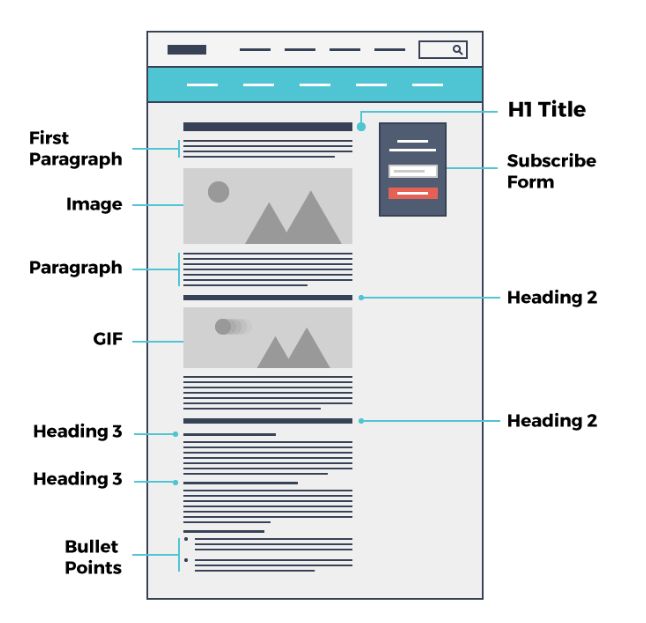
When writing, I also use a few tricks that you should also pay attention to from this point going forward.
Essentially, choosing a variety of headings and using them properly is a great way to help Google understand how information is structured in your article.
So, basically, you should use any way possible to show the cute little Google robots (I just like to think of them this way, sort of minion-like) that your content is well-organized.
- Use Heading 2 for the more important bits, Heading 3 for the less important ones, and Heading 4 for the still important stuff.
- Write paragraphs which are a few lines long and make sure they are easy to skim through.
- Use bulleted or numerical lists to avoid long blocks of text.
- Use a good number of images to enrich your article visually.
- Remember to update your images’ alt tags with your focus keyword for SEO purposes.
- Another
- Also, GIFs are a great alternative to YouTube videos, but you will be compromising on the image quality. But the page will load faster, on balance.
- Before you introduce your topic (e.g. Positioning) you should structure your article to write about the broader concept it belongs to (e.g. S-T-P method).
How long should my blog post be?
The perfect length for blog post is a number as real as anyone’s weight after Thanksgiving feasts or Christmas mince pies.
So, let me begin by saying that the perfect blog post length per se does not exist. Generally, speaking anything around 2.500 words should be fine.
Now, don’t get me wrong: this number doesn’t mean you should go meandering and blabbering on and on until you reach the minimum of 2.500 words.
This number also depends on a variety of factors, such as how competitive your focus keywords are, how much content there is out there on the same topic, your target audience, the way you organize this information, other extralinguistic elements (such as the use of images, video, GIFs, etc.). I am going to write an article on this topic soon, but for now, there are quite a few things covered in this article which I’m sure you will enjoy reading (or watching).
The TL;DR version of this would be that all the aforementioned factors play a role in the appropriate length for a blog post. However, if I had to say one thing, I would point at the top 10 articles for that keyword you are writing for and their average word count.
How can I make the most of my content?
From posting inspirational quotes or uploading short videos or tweetable bits, your content can serve more than one channel.
So, try to find how each piece of content could be used.
For instance, a video on a topic you enjoyed talking about at a conference could turn into 10-20 tweetable bits, or 15 inspirational quotes, or a short piece of article (even a transcription), and so on.
How to promote your Blog
Set up Popups right away
You literally cannot afford to not have popups on your blog.
It’s the single most effective reason to build your list and build a relationship with your audience.
Even when you run ads on social media or Google and drive all that traffic to your blog, you can’t expect to convert everyone on the spot.
But, give users a freebie or remind them to sign up to your newsletter for future offers and discounts and they will happily agree to it.
Sign up for Sumo or Exit Bee and watch your list grow and your conversions increase!
- Plain ol’ “Subscribe to our newsletter” popup: Incentivize your blog visitors to stay informed
- Exit-intent popup: Right before your blog visitors leave your blog they are presented with an incentive to sign up.
- “After scrolling 60%” popup: Set up a trigger for the more engaged readers, e.g. those who have scrolled down to 60% of the page.
- Try the Welcome mat: You can’t miss this overwhelming popup as it takes over your user’s screen with a very tempting message or offer.
- Have Surveys do research for you: Ask your blog visitors what they would like to see more of in terms of content.
Up next: Your Social media campaigns
I take it that you’ve already checked the availability of your domain name on Facebook, Twitter, or the channels you will be signing up for, anyway.
While most of the information you need about this you will find on the Marketing Plan article or the Instagram Marketing one, here are a few basic things to keep in mind.
You need to launch your marketing actions all at once.
As soon as you post an article or new content on your blog, you should post it on the respective platforms.
This doesn’t mean that you should use the same copy across platforms or the same link.
For instance, if you publish a new article on WordPress, you will post the link on Facebook with a CTA (call-to-action), such as: “Check out what the 5 most common mistakes in English by non-native speakers are” or “How many of these mistakes do you make when speaking English?”.
When you post that on Instagram, you’ll need a colorful photo, not one that communicates the topic necessarily (e.g. a distressed learner) but rather a person looking at their smartphone surprised about what they are reading.
This will help users identify with the person in the image, and therefore click the link in your bio.
Following this, you should check out which insights seem more flattering and then choose to promote the content on that platform.
For example, say that your post was seen by 1,000 users, and only 55 interacted with it compared to 500 users and 40 interactions.
It’s easy to decide where you should spend your money.
Let the world see you with Email Marketing and Automation
There is no better way to build a relationship with your audience than with Email Marketing and Automation.
Scott Chow from The Blog Starter calls email the easiest and the most direct way to reach a person who is interested in your product or service. After all, if they opt-in to receive your updates, they have already qualified themselves as valuable leads.
Besides the ROI (for every dollar you spend on Email Marketing you get another 40 back), you also get to really know your mailing list.
As opposed to social media, your campaigns on which heavily rely on their respective algorithms, Email Marketing gives you access to your mailing list.
That’s your own audience, the people who willingly signed up for your newsletter.
Nothing like the audience who saw a “sponsored” post mingling with the rest of the posts on their News Feed. Don’t get me wrong; it’s not a bad audience and you certainly need that, but the two are different both in terms of engagement and in terms of behavior.
- Send newsletters on a regular basis
Be sure to avoid spikes in frequency in order to build trust. - Use the auto-resend feature
Auto-resend your campaign to those who didn’t open it the first time. It’s all about timing. Just change the subject line. - Craft better campaigns
Segment users based on their behavior: what products they clicked on, how many emails they opened last month, etc. - Increase user engagement
Set up drip campaigns to send users emails like “Hi Josh, you read about X, here is a relevant article”. - Send exclusive offers
Give subscribers the opportunity to claim the special offer on, say, your yearly subscription and get access to perks. - Value your subscribers’ time
Send Digest campaigns with your top-performing articles or the most popular ones with our RSS feature.
SEO and Backlinks
Starting a blog requires growing your authority as a content creator.
To do that you will need backlinks to your blog because these prove to Google that what you are saying makes sense to more people.
At the same time, you will want to make use of that traffic to your blog by redirecting them to other pages on your website/blog. This way, you have a lower bounce rate and you keep your visitors entertained for longer, ergo win.
- External links (ie. your other sources)
- Internal links (ie. linking to one of your pages)
Now, SEO is a whole new chapter in and of itself. But there are ways to learn faster with affordable SEO practices.
And you will not need to spend a fortune because some SEO practices are
For example, a very user-friendly tool that I like to use about making sure that everything is in check is Yoast SEO, a WordPress SEO plugin.
And then, of course, reading every article that comes your way about SEO (Yoast has a pretty cool newsletter, too), or even signing up for an eCourse will certainly help.
Additionally, a huge ranking factor is page speed, but how do you measure it?
There are a handful of available tools available some of them to try out: Pingdom and GTMetrix. Those stats will help you to identify how to speed up your website.
That’s all for now. As soon as I’ve written an SEO guide, I’ll share it with you.
Setting up your YouTube channel
First, we want to make sure that you call dibs on your YouTube channel before anyone else does.
Then, we need you to put in the work and start uploading videos and fresh content.
And while you may not feel ready for video marketing just yet, chances are you never will be, so you might as well start now and make adjustments later.
You don’t need expensive equipment, you need to add value and contribute to the sweet chaos of content out there, as I like to call it.
While you’re at it, you will also be helping the future you and your blog with a boost in SEO. Why, you ask?
Say hello to Voice Search Optimization
Voice Search Optimization is the next big thing.
To start preparing for VSO, start using more conversational copy.
Essentially, users will be using search engines to request information using their voice instead of typing.
Speaking is much faster than typing and it can bring more accurate results, too.
So, instead of typing “hairstylist hampstead best” you will ask your Siri or voice search on Android “who is the best hairstylist in Hampstead?”.
As a result, the latter phrase will benefit pages that show reviews of hairstylists in London using more natural language.
An implication of this is also what your answer to the question will be. In other words, Speech Output (that Google voice that reads results to you) will prefer shorter sentences (and not my 5-sentence-long answers, I wonder why not).
There are tons of interesting articles on voice search optimization and I really think you should skim through these. In 10 minutes you’ll know a bunch of cool stuff!
BONUS Tip by an expert
My colleague George who is an expert at photography and video suggested that when uploading a new video I shouldn’t just choose a cover from the suggested frames.
Instead, he suggested that I create a new thumbnail that is a frame from the video reading a shorter, more concise title for the video, other than my video’s title. Great idea, isn’t it?
Here’s an example I came across online:
Increasing Engagement on your blog
User engagement serves as an exquisite pointer about whether you are doing something right, wrong, terribly wrong.
Having traction is what shows that you could take your efforts up a notch.
Here are a few things that I always check to ensure that user engagement is on point.
Then, I make adjustments accordingly.
Managing comments on your blog
Are there comments on Disqus? Would users sign in to leave a comment, interact with the author, or reply to other comments?
Are they requesting more information about a topic? Is the topic you just wrote about (or your approach) garnering attention as a controversial topic?
What is Disqus?
Disqus is a blog comment hosting service. It helps you build an audience and increase engagement. Provided you reply to users’ comments, that is.
Another feature that I really enjoy is the service’s marking spam comments and submitting them to me via email so that I can approve them in one click or simply typing “Spam”.
Monitoring your Bounce rate
What is your bounce rate? What is the average time of reading time per article?
How many drop out?
What actions do users take afterward?
For one thing, out of your monthly traffic, you could have 30% bounce rate, meaning that 1 every 3 users quits reading your blog.
But, at the same time, this could also mean something else: that your users are signing up for your service because you sold them that well.
So, incorporating some calls-to action (CTAs) is also a very important pointer for a blogger, to see whether users are interested.
Beefing up engagement with Freebies
What if your subscribers or readers of your blog never knew what was in store for them?
Imagine how the element of surprise would skyrocket your opens and engagement.
For example, check out the playful and refreshing newsletter of artist Hom Sweet Hom to announce her free Resource Library:

I love how fresh her ideas always are and I never fail to check her emails!
Leveraging what Email Automation has to offer
Another way to monitor user engagement is through Email Automation. For example, you could ask users to click a link if the topic of the newsletter you just sent them is not of interest to them.
If they click the link, they are segmented out of that mailing list. If they don’t, they will keep receiving emails from that drip campaign.
Here is an excellent example of this type of campaign: Becca Courtice is a Canada-based calligraphy/lettering artist/online tutor.
Whenever she posts a new series of online courses or e-class (on which users all learn together, get homework together, discuss or share their work on the private Facebook community, etc.), she asks whether I wish to be informed further.
Here is another way in which Becca Courtice informs her audience about Flash Sales and gives them the opportunity to drop out of the drip campaign before it begins.
That is a truly personalized experience and user-friendly at the same time:
It’s so easy to improve your subscribers’ newsletter experience!
Encouraging users’ Social shares

How easy is it for your users to share your content across their platforms at the blink of an eye?
Social Warfare is a service that shows users how many times readers have shared your article.
Click to Tweet is another feature that enables readers to tweet one of the quotes in your article or your highlighted tweetable bits.
This is what it looks like:
As soon as readers hover their cursor over the box, it “lights up”:

And finally, upon Clicking to tweet, this popup box appears:

Sweet? And it only takes a few seconds to set up!
Step up your Google Analytics game
Well, again, my goal here is to show you the essential things to get started in blogging, but you will need to do some more research on your own.
With regard to Analytics, you should always look at organic traffic and the traffic that each of your social media accounts brings back to your website.
This will serve as a great indicator for your marketing plan design.
What I would look for in Google Analytics would be the top performing articles, the average session duration, the bounce rate, or the number of new users coming over to the blog.
Then, I would definitely cross-check with analytics from the popups I have set up and the conversion rate, to design my strategy from that point on.
(Your strategy design will become significantly easier if you grab the marketing calendar, complete with expert worksheets for 2019!)
Allow users to estimate reading time with a Reading progress bar
Also called “Reading position indicator“, you’ll love the effect of this small tweak/plugin.
It simply informs readers of how long the article they are reading is, so that they manage their time better.
To make the most of this plugin, make sure that you have an exit-intent popup or another tool in place to deliver an offline version of the article via email (*wink wink*) (list-building).
Instead of hiring a consultant, ask your users
Another way to keep user engagement in check is to survey your blog visitors.
You could fine-tune the settings of this survey by managing who it appears to, such as frequent visitors or engaged users.
Run this survey over a month, couple it with a facebook or another advertising campaign to ensure that you have a good sample for your survey from the traffic boost.
Then, use these insights to try new things in your content strategy.
Couple this tactic with the Survey Buyers automation from your Moosend suite (available for free to all subscription plans).
This way, chances are you’ll get even better insights, because your mailing list is where your more engaged fans are; they cared enough to enter their email address, didn’t they?
Questions could be simple “yes/no questions” or open-ended questions.
Then, combining these results, you’ll have access to a pool of information, as if you had run both a qualitative and a quantitative research!
Showing gratitude to your supporters
When looking for ways to bond with your audience, showing gratitude may sound simple but it is huge.
Sending a newsletter as the one below that Hom Sweet Hom sent me a while back is an action that thanks me for following through:
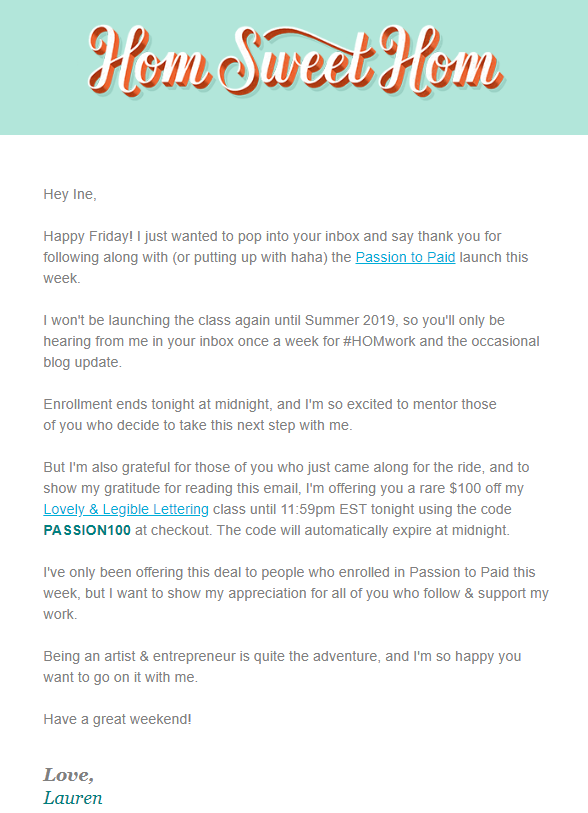
On to your USP
Now, we need to differentiate your blog. Inspiration for this differentiation could derive from your target audience.
For example, if your target audience leads a busy life, then podcasts or self-learning methods such as platforms (see below) could work.
Publish your Podcasts
You went through the trouble of writing a 2,500 to 3,500-word article.
It’ll take you a few minutes to record it on your smartphone and post it as a podcast/reading alternative.
This way, your followers (if you launch a podcast on a platform) will be able to listen to it when they are stuck in traffic, happily driving to work, waiting in a doctor’s lobby, waiting at the supermarket, or waiting for their hair to grow, or for someone to text them back.
So podcast your heart out.
You’ll be doing this world a favor.
Set up courses on Teachable
I haven’t done research in this one, but I really really like this platform where you just sign up and courses appear on your Teachable app.
You can create short courses on Teachable which, much like podcasts will be up to the users to decide when and where they will be starting.
Oh, don’t you just love the potential of flexible learning?
Especially when it coincides with your target audience’s needs?
Publish content on Vimeo
Vimeo is the paid version of YouTube and gives content creators much flexibility regarding videos while protecting their copyrights (e.g. no embedding is allowed).
At the same time, though, you may need to consider the fact that the content you upload to Vimeo does not count towards your SEO score.
So, you might want to factor that in, before you decide: do you value your exclusivity more than you do your SEO?
There are two alternatives to this one, by the way:
The first one is to post some of your content on YouTube and the rest on Vimeo. Try Vimeo for your exclusive videos, the ones reserved for your top, more engaged, highest-paying users. Share your YouTube videos with those looking for more generic content. On the downside, though, it will be harder for you to ensure that users are acquainted with the entirety of your content online.
Another idea is to post everything on one platform, but in the case of YouTube, change visibility from Public to Private or Unlisted.
Create a “password-only” library
Here’s another idea to stand out from your competition: build a microsite, entry to which requires a secret password.
The microsite can give users access to unique content that is free.
Only, this free content will also serve as a great list-building tactic.
Check out this example below by Amanda Arneill:
This is what the letterer’s Resource Library looks like (under Lettering Freebies):
By clicking “Get your access” you are redirected to a sign-up form.
As soon as you fill that in, you get the email below:

Then, back to the Resource Library, you click “Head on in!” and you enter the password in the page below: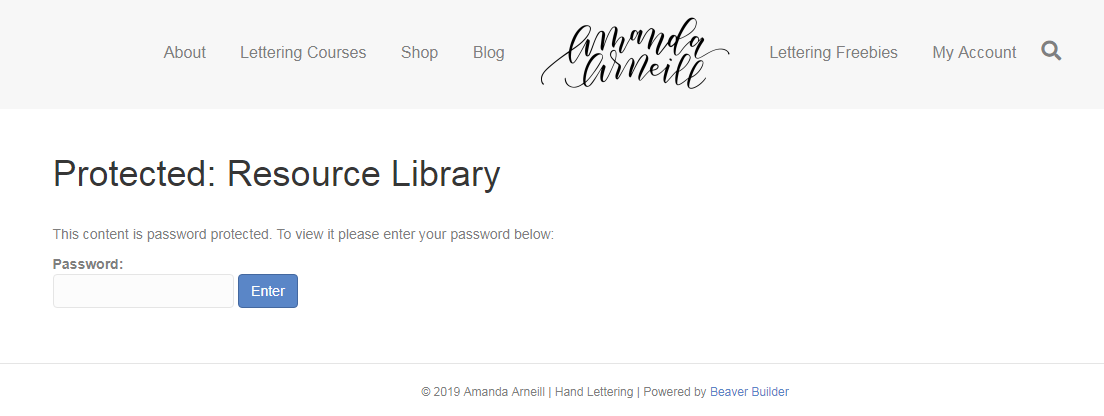
Fancy?
Surprise users with Bonus content
Another great way to increase your authority as an expert and take away some of the uncertainty pertaining to purchasing an e-course is to give away a free lesson or bonus content!
I still remember how ecstatic I was when Hom Sweet Hom sent this email (see below) to the mailing list I had signed up for:
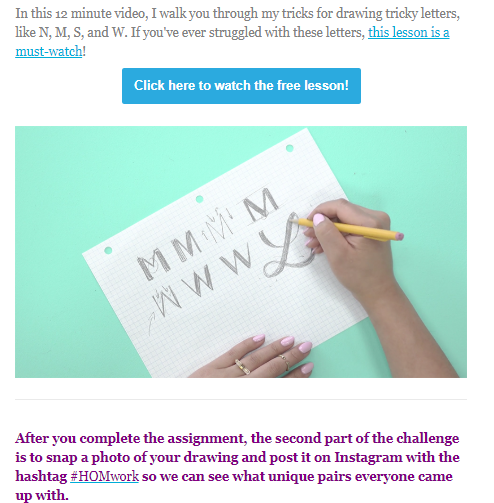
Also, did you notice the dedicated #hashtag that Hom created for Instagram uploads?
This way, she is building her Instagram community around the #hashtag follows!
Here is another example of freebies on your blog that will help you build a list:
Happy ever Crafter, aka Becca Courtice, has created various folders with free content. These go from supplies guide to free tutorials and so on.
Below, you see the page dedicated to the supplied guide on the blog:

Scrolling down, users come across this concise signup form, from where they get instant access to the guide:

So, what do you say?
Ready to come over to the bloggers’ side? There are cookies and scones here (and the occasional writer’s block, but let me fine-print that).
Just kidding, Joshua!
We’ve been waiting for something fresh in blogging!

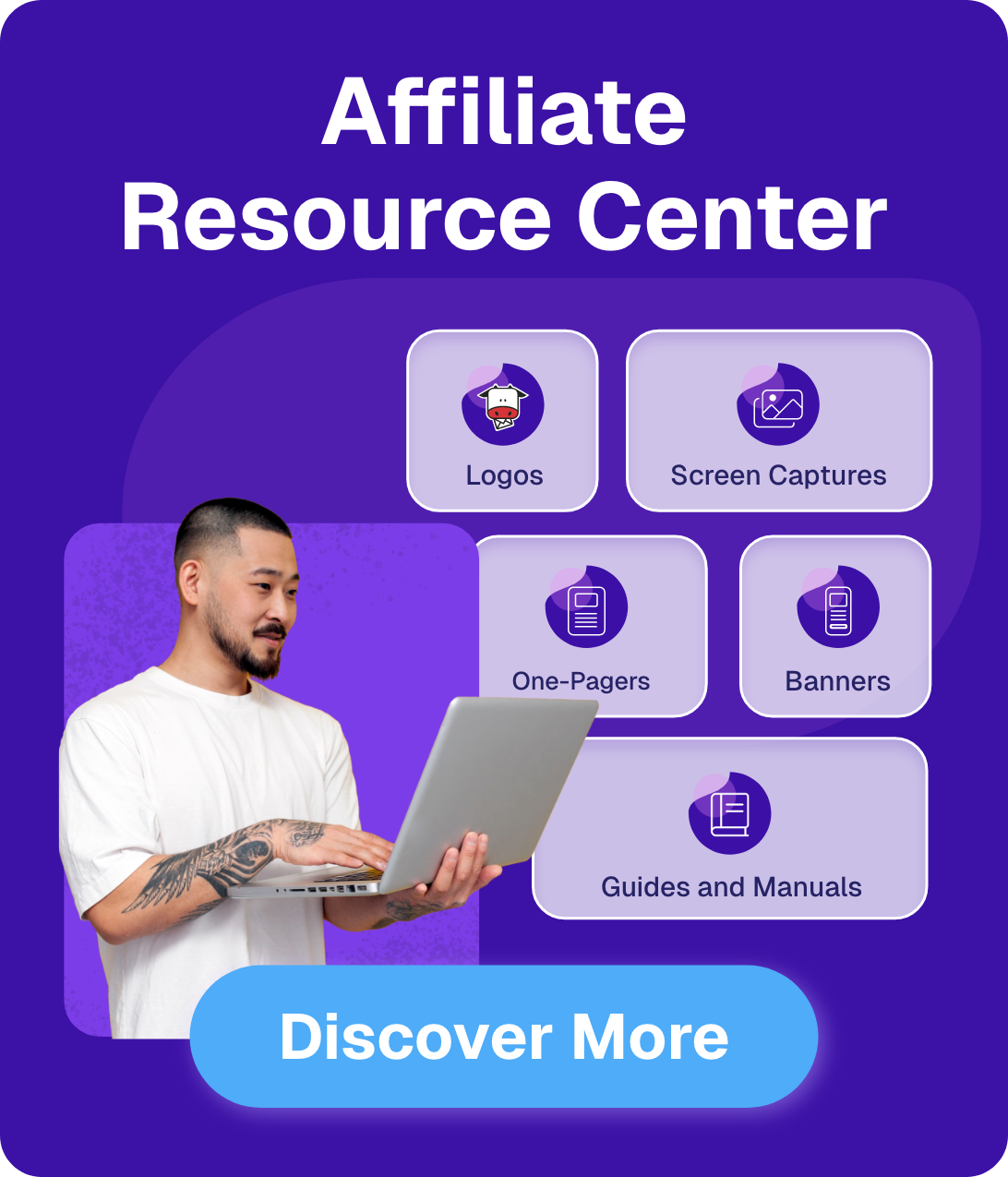
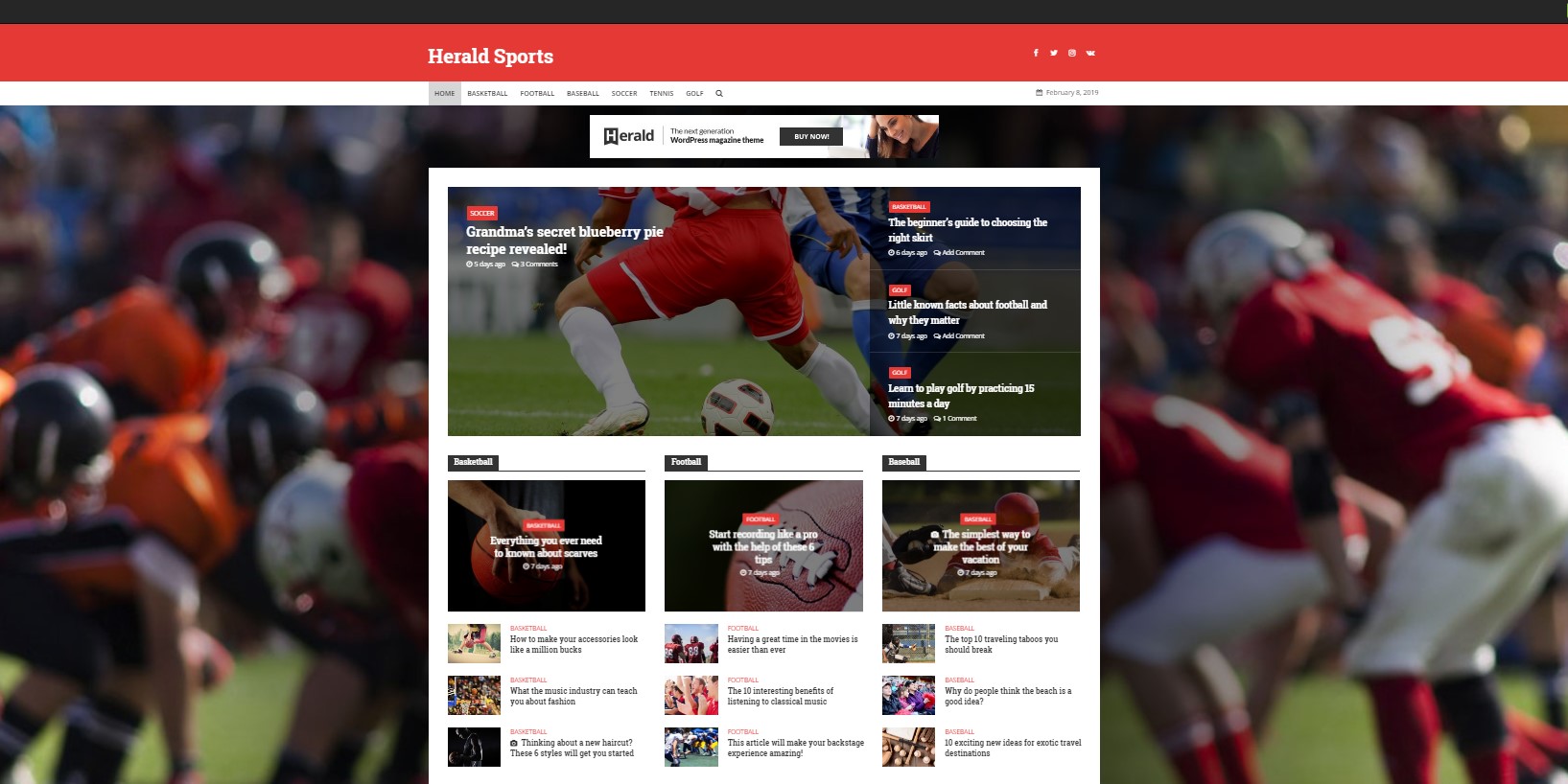

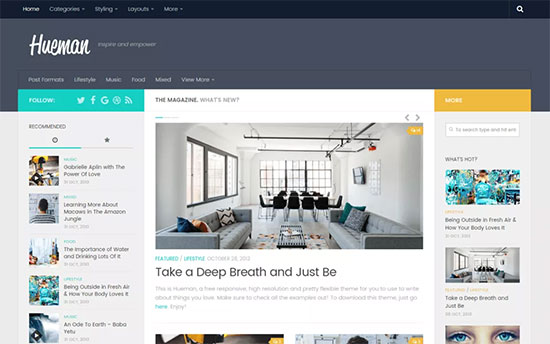




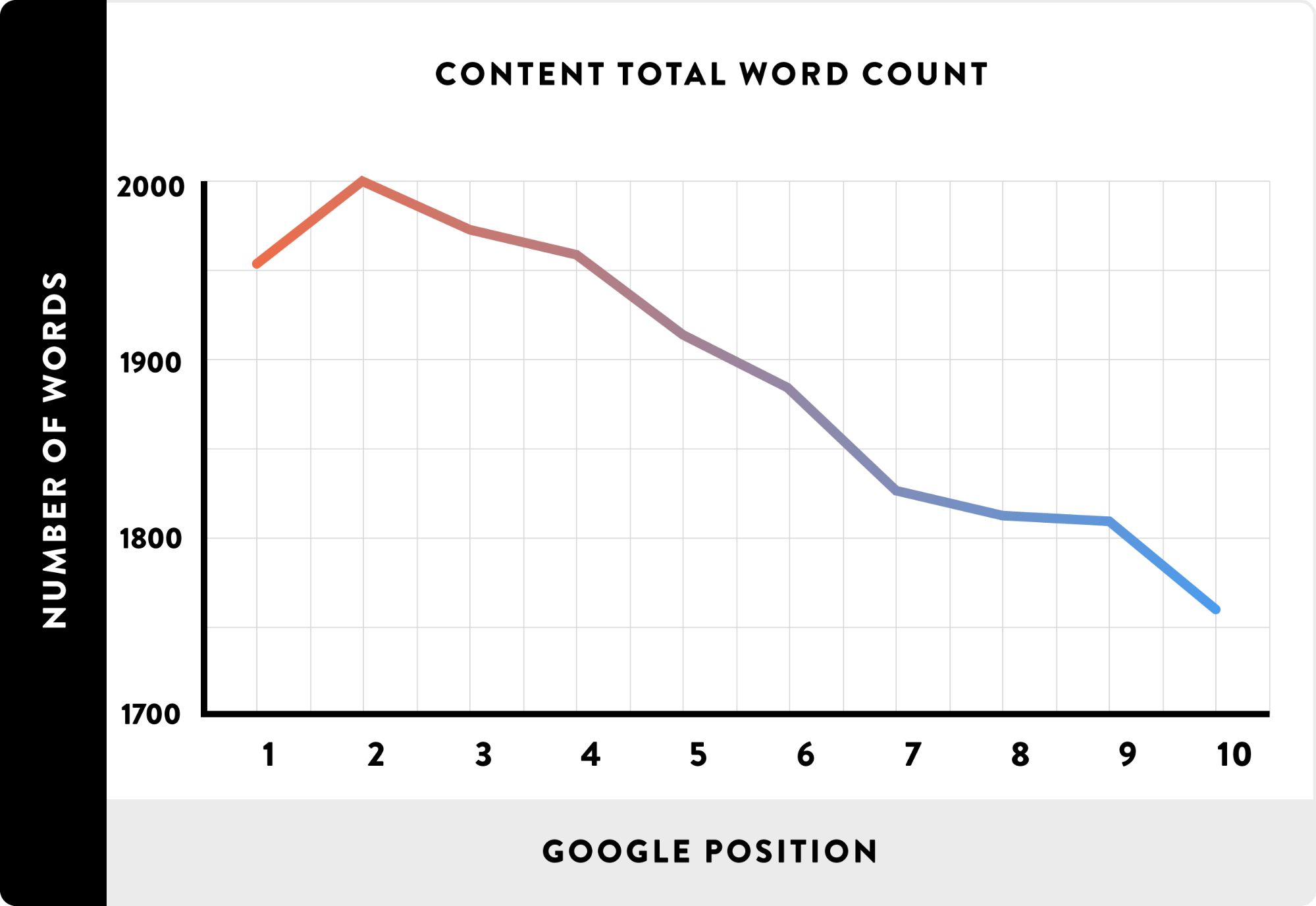
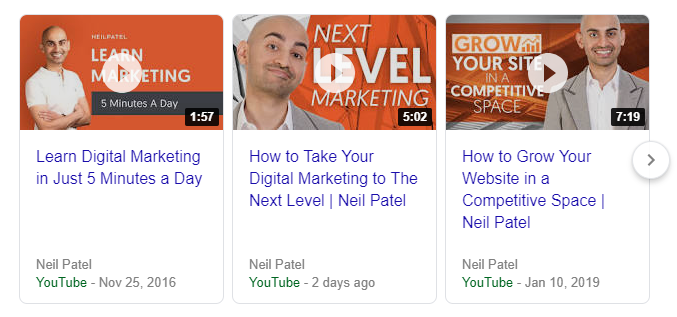






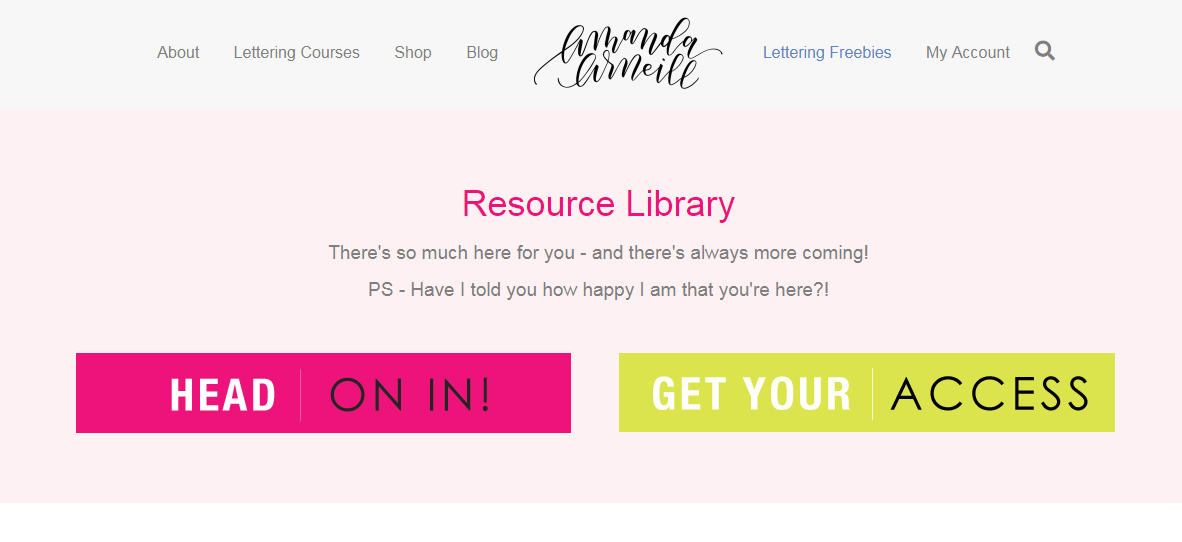

 Published by
Published by

 Published by
Published by
